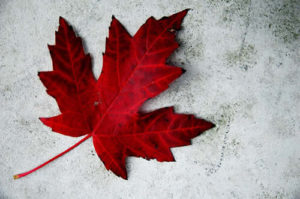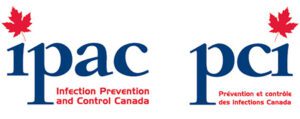Mold and Allergies
 A Common Problem
A Common Problem
Mold and allergies have become a significant problem in today’s world…more so than at any other time.
Mold is a fungus that comes in thousands of varieties and grows both outside and inside. In order to thrive, mold needs two things: water and warmth — and you certainly don’t have to endure a hurricane to find it multiplying in your home. “Mold spores are everywhere. They’re just waiting to be watered to start growing,” says Paul J. Pearce, Ph.D., assistant professor of pathology and microbiology at Baylor College of Medicine in Houston. Mold can be present indoors during the entire year. And in most of the country, this is the time when outdoor molds start to grow as well. They flourish in damp, shady areas such as piles of leaves, hay, grass, and soil, and they last through late fall. In warmer climates, they can be a year-round problem.
Up to 10 percent of the general population, including children, are allergic to or sensitive to mold, according to a 2015 study in Allergy, Asthma & Immunology Research. Inhaling spores—the invisible airborne seeds of mold—can cause sneezing, a runny nose, itchy eyes, wheezing, and coughing. “If a parent has allergy-triggered asthma, the child will be more prone to all allergic diseases, but especially to asthma,” Scott Sicherer, M.D., a pediatric allergist at Mt. Sinai School of Medicine, in New York City, has told Parents. Unfortunately, doctors are finding that mold allergy is more than just hereditary. A study at the University of Cincinnati revealed that babies exposed to high levels of certain types of household molds have an increased chance of developing multiple allergies later in life. Other research has found that children who live in a home with visible mold and a history of water damage have as much as double the rate of asthma—even if their parents don’t suffer from the disease. Asthma and mold are a particularly risky combination. Most kids with asthma are allergic to mold, and they tend to react more severely to molds than they do to other triggers. “Outdoor mold begins growing in the spring and gets worse as the year progresses,” says Linda B. Ford, M.D., an allergist at The Asthma & Allergy Center in Omaha. “If your child has asthma, it’s important to try to avoid places that are most likely to have mold.” Areas that are especially mold-prone typically include home vegetable gardens, freshly mowed grass, barns, farms, and buildings closed during the winter.
Damp Dangers
Over the past two years, after thousands of homes were flooded in the Midwest, doctors warned residents about the danger of indoor mold growth. “When your building has been flooded, it’s very difficult to dry it out quickly and completely,” explains H. James Wedner, M.D., chief of allergy and immunology at Washington University School of Medicine, in St. Louis. The number-one rule is to remove all wet building materials, carpet, and even wood because they can’t be salvaged if they’ve been saturated for longer than two days. “Sheetrock soaks up water far above the flood line; mold can be hidden under wallpaper, carpet, and floorboards, as well as in ceiling tiles, furniture, and clothing,” says Dr. Wedner. Contamination can start with just a trickle of water — even a small leak in your roof or pipes can lead to a major mold problem that can make your family sick. Although mold can grow behind your walls or in your basement where you can’t see it, you may see dark patches on surfaces or notice a musty smell.
Jennifer Minus learned how insidious mold can be when her family moved into military housing on the East Coast. Her son, Joseph, then 6, started sniffling soon after the move, and eventually he couldn’t breathe out of his nose at all—even with his allergy medication. “He had trouble sleeping, he’d get winded easily, and he was generally miserable,” recalls Minus. She found mold growing on a wooden window frame, so she cleaned it with a bleach solution, but then she heard that neighbors had recently moved out of their house because of mold. She had her home’s air quality checked, and the test revealed massive amounts of mold. “It was growing inside the window frames and through the wall,” says Minus. The army moved the family to new housing, and Joseph’s symptoms improved quickly, even though it was prime allergy season. Unfortunately, though, most families aren’t able to escape from their moldy home this easily.
Take Symptoms Seriously
You may brush off your child’s sniffles at this time of year as a bit of hay fever, but pay attention to whether he reacts in specific locations, like the basement or outside after you’ve mowed, and also if his symptoms persist beyond spring pollen season (generally March to June). If your pediatrician thinks that mold may be the culprit, she’ll probably refer you to an allergist for testing. The allergist will lightly prick your child’s skin with a needle containing common allergens and watch for a hive-like reaction. “The skin test is the gold standard for identifying allergies and finding the treatment that is the most effective,” according to Stuart Abramson, MD, Ph.D., a pediatric allergist and immunologist at Texas Children’s Hospital in Houston.
When your child is mildly allergic, avoiding exposure may be the only treatment she needs. Check your local newspaper or the American Academy of Allergy, Asthma & Immunology’s National Allergy Bureau for outdoor mold-spore levels in your area, and try to stay indoors when levels are high. If your child’s allergy is severe, a combination of an over-the-counter antihistamine, like Claritin or Zyrtec, and a prescription inhaled nasal steroid, such as Flonase or Nasonex, should help. Immunotherapy shots against mold are available, but experts say they aren’t always effective. During our own cleanup after the hurricane, we sealed our daughters’ bedroom door to keep the mold spores contained, and then we tore out the wet Sheetrock and carpet. Within days, Emily’s wheezing subsided, and I’d learned a valuable lesson: If you can’t prevent mold, get rid of it as fast as possible. Here’s a link to an internal blog post that can help you in identifying some of the issues you may be experiencing, https://mapleleafmold.ca/is-hidden-mold-a…-making-you-sick/
Home Protection
Although older houses may be more prone to leaks, new ones are also vulnerable to mold because energy-efficient windows and doors can keep moisture trapped inside. Follow these tips to reduce your risk.
- Repair any leaks quickly. If you notice a moldy odor in a room, look for hidden leaks.
- Use exhaust fans, which vent outside of the home, in the bathroom and kitchen.
- In bathrooms, use washable throw rugs instead of carpet.
- Keep indoor humidity levels at 40 to 60 percent (check them with a small digital humidity monitor). Set up a dehumidifier if necessary, especially in a damp basement.
- Use an air conditioner with a HEPA filter to remove spores in the air, and change the filter regularly. If you don’t have AC, close windows when it’s humid.
Careful Cleanup
If you find mold in your home, don’t panic. According to the Centers for Disease Control and Prevention (CDC), you usually don’t need an air-quality test. The tests are expensive, there are no federal standards for safe mold levels, and knowing the type of mold won’t change how you handle it. The most important thing is to take these steps to remove the mold—and correct the water problem that caused it.
- Wash clothing, stuffed animals, and other washable cloth items in hot, soapy water. Dry clean or throw out cloth items that can’t be washed.
- Wipe hard-surfaced objects like countertops and toys with a solution of one cup of bleach to one gallon of water and let them dry thoroughly.
- For large areas of mold contamination, consult a professional trained in mold remediation (visit iicrc.org to find one near you). Ask your doctor if your family should leave while the mold is being removed.
The Truth About Toxic Mold
You may have heard news reports about “toxic” molds like Stachybotrys chartarum, which has been blamed for everything from runny noses to potentially fatal pulmonary hemorrhage during the past decade. A few molds do produce chemical toxins called mycotoxins, but you’d need to swallow them to get sick. “In order for inhaled mold to pose a serious health risk from mycotoxins, you would have to be in a very, very heavily contaminated building,” says Dr. Stuart Abramson.
But the CDC is still urging caution. According to its comprehensive study, any type of mold can cause symptoms if you’re exposed to large quantities of it for long periods of time, even if it’s not considered to be “toxic.” Children and adults who suffer from mold allergies or lung diseases are the most vulnerable.

Maple Leaf Mold Inc. is a certified mold / asbestos removal and biological disinfection / air analysis company located in Toronto that uses certified IICRC technicians for all testing and remediation projects.
We are a professionally licensed firm experienced in testing, verifying and removing Mold / Asbestos / Lead and other environmental contaminants as well as providing disinfection services to control and kill biological contaminants.
Call 416-254-7256 to talk with us about your issue anytime.




 A Common Problem
A Common Problem